Accept all cookies Accept only essential cookies See our Cookie Notice

About ESA
The European Space Agency (ESA) is Europe’s gateway to space. Its mission is to shape the development of Europe’s space capability and ensure that investment in space continues to deliver benefits to the citizens of Europe and the world.
Highlights
ESA - United space in Europe
This is ESA ESA facts Member States & Cooperating States Funding Director General Top management For Member State Delegations European vision European Space Policy ESA & EU Space Councils Responsibility & Sustainability Annual Report Calendar of meetings Corporate newsEstablishments & sites
ESA Headquarters ESA ESTEC ESA ESOC ESA ESRIN ESA EAC ESA ESAC Europe's Spaceport ESA ESEC ESA ECSAT Brussels Office Washington OfficeWorking with ESA
Business with ESA ESA Commercialisation Gateway Law at ESA Careers Cyber resilience at ESA IT at ESA Newsroom Partnerships Merchandising Licence Education Open Space Innovation Platform Integrity and Reporting Administrative Tribunal Health and SafetyMore about ESA
History ESA Historical Archives Exhibitions Publications Art & Culture ESA Merchandise Kids Diversity ESA Brand Centre ESA ChampionsLatest
Space in Member States
Find out more about space activities in our 23 Member States, and understand how ESA works together with their national agencies, institutions and organisations.
Science & Exploration
Exploring our Solar System and unlocking the secrets of the Universe
Go to topicAstronauts
Missions
Juice Euclid Webb Solar Orbiter BepiColombo Gaia ExoMars Cheops Exoplanet missions More missionsActivities
International Space Station Orion service module Gateway Concordia Caves & Pangaea BenefitsLatest
Space Safety
Protecting life and infrastructure on Earth and in orbit
Go to topicAsteroids
Asteroids and Planetary Defence Asteroid danger explained Flyeye telescope: asteroid detection Hera mission: asteroid deflection Near-Earth Object Coordination CentreSpace junk
About space debris Space debris by the numbers Space Environment Report In space refuelling, refurbishing and removingSafety from space
Clean Space ecodesign Zero Debris Technologies Space for Earth Supporting Sustainable DevelopmentLatest
Applications
Using space to benefit citizens and meet future challenges on Earth
Go to topicObserving the Earth
Observing the Earth Future EO Copernicus Meteorology Space for our climate Satellite missionsCommercialisation
ESA Commercialisation Gateway Open Space Innovation Platform Business Incubation ESA Space SolutionsLatest
Enabling & Support
Making space accessible and developing the technologies for the future
Go to topicBuilding missions
Space Engineering and Technology Test centre Laboratories Concurrent Design Facility Preparing for the future Shaping the Future Discovery and Preparation Advanced Concepts TeamSpace transportation
Space Transportation Ariane Vega Space Rider Future space transportation Boost! Europe's Spaceport Launches from Europe's Spaceport from 2012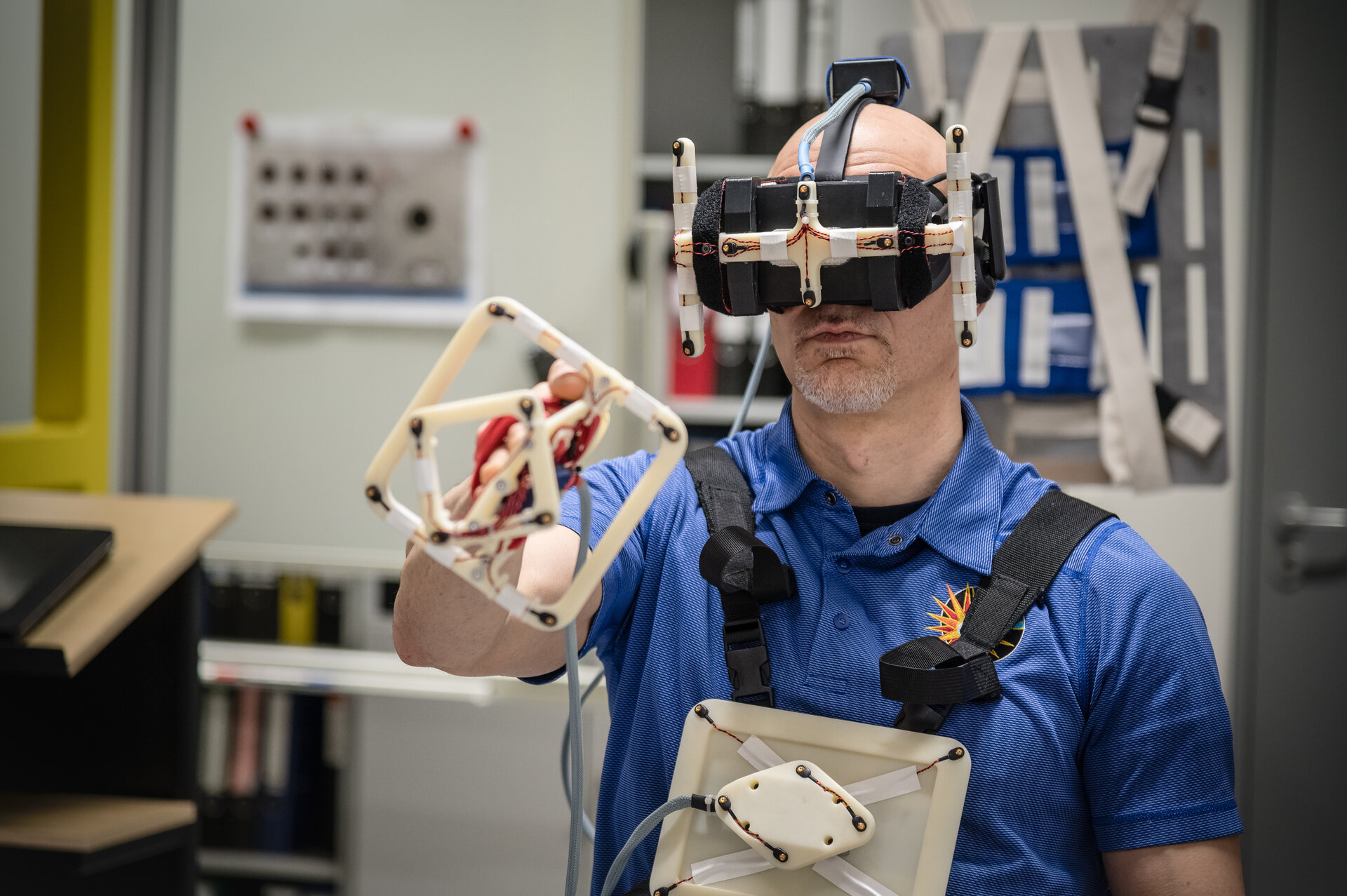
Suited up for gravity
Thank you for liking
You have already liked this page, you can only like it once!
When it comes to grasping an object, our eyes, ears and hands are intimately connected. Our brain draws information from different senses, such as sight, sound and touch, to coordinate hand movements.
Researchers think that, on Earth, gravity is also part of the equation – it provides a set of anchoring cues for the central nervous system. Human evolution has balanced its way across millenia with visual references, self-orientation and the help of the vestibular system.
ESA astronaut Luca Parmitano got a handle on how microgravity affects our ability to grab and manipulate objects in space with the Gravitational References for Sensimotor Performance (Grasp) experiment.
To get an idea of the differences in how our brains work both with and without gravity’s pull, the Grasp experiment is also conducted back on Earth. Following his 201-day mission in space, Luca is continuing to work with researchers to collect scientific data while he undertakes a comprehensive rehabilitation programme.
During Grasp, Luca’s eyes, ears and hands are suited up with a set of sensors – including a virtual reality headset – that gather information about his actions as he carries out a range of tasks. Rotating his hand to align with a visual object is the main activity, couched in a sort of video-game target practice.
By analysing patterns in the way Luca aligns his hands to the target, researchers seek to better understand how the central nervous system integrates the role of gravity in the neural processes underlying eye-hand coordination.
Armed with an enhanced understanding of the physiology behind eye-hand coordination, researchers hope to better understand and treat disorders relating to vertigo and dizziness, balance, spatial orientation and other aspects of the vestibular system. It will also be helpful in guiding astronauts during spacewalks and in developing the most effective ways of controlling robots remotely.
During his second mission, known as ‘Beyond’, Luca supported more than 50 European and over 200 international experiments and gained the European record for longest cumulative spacewalking time.
-
CREDIT
Franceso Algeri -
LICENCE
ESA Standard Licence
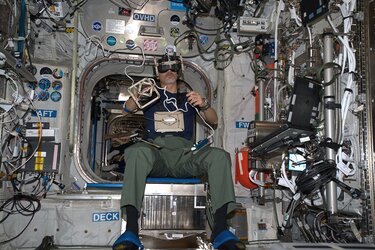
Grasp experiment

A good GRASP on the New Year
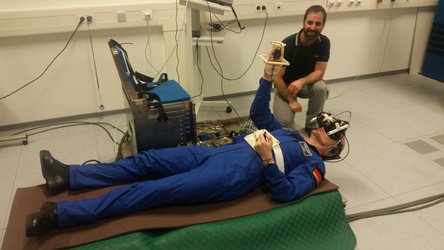
Grasping Gerst
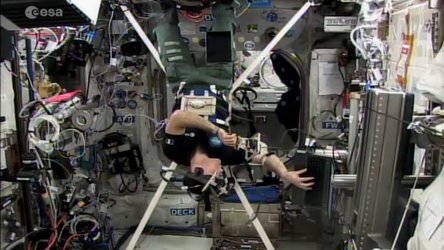
Grasping for space
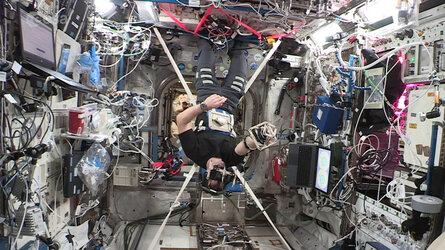














 Germany
Germany
 Austria
Austria
 Belgium
Belgium
 Denmark
Denmark
 Spain
Spain
 Estonia
Estonia
 Finland
Finland
 France
France
 Greece
Greece
 Hungary
Hungary
 Ireland
Ireland
 Italy
Italy
 Luxembourg
Luxembourg
 Norway
Norway
 The Netherlands
The Netherlands
 Poland
Poland
 Portugal
Portugal
 Czechia
Czechia
 Romania
Romania
 United Kingdom
United Kingdom
 Slovenia
Slovenia
 Sweden
Sweden
 Switzerland
Switzerland
























